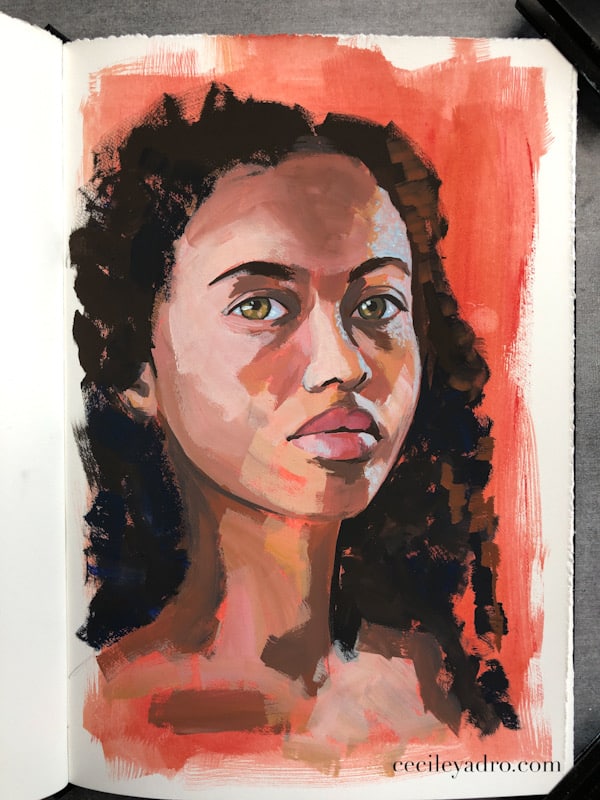7 tips for successful gouache landscapes
Do you want to create stunning gouache landscapes? Follow these 7 tips for successful gouache landscapes and watch your skills improve. From working in layers to choosing the right brush, these techniques will help you achieve the desired effects and bring your landscapes to life. So, let’s dive in and explore how to create successful gouache landscapes.
Table of Contents
- Work in Layers
- Increase the Consistency of Layers
- Use Aerial Perspective
- Use Textures to Give the Impression
- Think Color Temperature
- Use the Correct Brush for the Part You’re Painting
- Use the Right Consistency for Desired Effects
- Conclusion
You can watch a video if you prefer:
This landscape has a real-time commented tutorial.
Work in Layers
When painting landscapes in gouache, it’s important to work in layers. Start with the sky and work your way of the scene to you. This will help you build up the painting logically and avoid accidentally painting over any important details.
Working in layers is an essential part of creating a thriving gouache landscape. Starting with the sky and gradually working your way down to the foreground can create a sense of depth and distance in your painting.
Increase the Consistency of Layers
As you work in layers, you can gradually increase the consistency of the gouache. This will help you create more depth and texture in your painting. Start with a thin consistency for the sky and gradually add more gouache to the mix for subsequent layers.
Think milk consistency for your first layer, and end with a thick, direct from the tube consistency. Mastering consistency is key with gouache and will help you achieve your desired results.

Use Aerial Perspective
Aerial perspective is a technique that involves using color and value to create the illusion of depth and distance in a landscape. Use warmer colors and higher values for objects closer to you and cooler colors and lower values for things further away. This technique, also known as atmospheric perspective, helps the viewer understand how far away objects are from them.
On sunny days, with a blue sky, distant objects will have a bluish tone as they reflect the sky’s color. They will also be less detailed than the objects in the foreground. And obviously, it will be me smaller!
I have accentuated the atmospheric perspective in this landscape with blue/green mountains (cool colors) and a yellow ochre/burnt Sienna field in the foreground (warm colors).

Use Textures to Give the Impression
Textures are a great way to give your gouache landscapes a sense of depth and dimension. Different brush strokes and techniques create textures like rough grass, smooth water, or rocky terrain. Experiment with different textures to see what works best for your painting.
It’s better to avoid replicating precisely what’s in the landscape, like painting individual leaves or grass. You should try to give the impression of it with different brushstrokes. Instead of painting each part of the field, I used a dry brush technique to mimic the texture.
Think Color Temperature
Color temperature is an important consideration when painting landscapes in gouache. Use warmer colors for objects that are closer and cooler colors for things that are further away. This will help create a sense of depth and distance in your painting.
This technique closely relates to aerial perspective and can help create a more convincing and realistic landscape.
Use the Correct Brush for the Part You’re Painting
Different parts of your landscape will require other brushes. Use a small, round brush for details such as branches or leaves and a larger, flat brush for areas in the sky. Make sure you have a variety of brushes on hand to ensure you can create the effects you want.

Use the Right Consistency for Desired Effects
The consistency of the gouache can significantly impact the final result. Use a thin consistency for washes and glazes and a thicker consistency for more opaque areas. Experiment with different consistencies to see what works best for your painting.
Conclusion
Creating successful gouache landscapes requires skill, technique, and creativity. It is essential to know the basics of gouache painting and how to use it effectively. Use these tips to start your next landscape painting project, and ensure you have all the skills you need before you begin!






